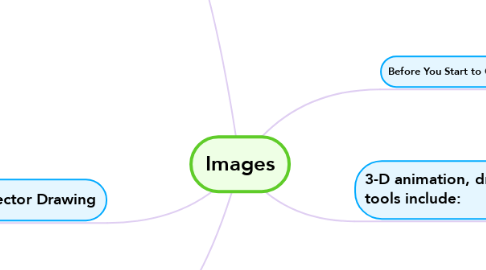
1. Vector Drawing
1.1. Vector-drawn graphics
1.1.1. -Applications of vector-drawn object -How vector-drawn images work -Vector-drawn images versus bitmaps
1.2. Vector-drawn images are used in the following areas
1.2.1. -Computer-aided design (CAD) programs needed by architects and engineers -Graphic artists designing for the print media -3-D animation programs – changes of position, rotation, and shading of light -Applications requiring drawing of graphic shapes
2. Making Still Images
2.1. 2 ways
2.1.1. Bitmaps(raster)
2.1.2. Vector-drawn graphics
2.2. Image editing programs enable the user to:
2.2.1. -Enhance and make composite images -Alter and distort images -Add and delete elements -Morph (manipulate still images to create animated transformations), allow to smoothly blend two images so that one image seems to melt into the next
3. 3-D drawing and rendering
3.1. 3-D animation tools
3.2. Features of a 3-D application
3.3. Panoramas
4. Before You Start to Create
4.1. Before commencing the creation of images in multimedia, you should:
4.1.1. -Plan your approach : Outline project and graphics ideas first – Make a flowcharts and storyboards. -Organize the available tools : Most authoring systems provide the tools with which can create the graphic objects of multimedia directly on screen. -Configure computer workspace: Have multiple monitors, if possible, for lots of screen real estate (viewing area)
